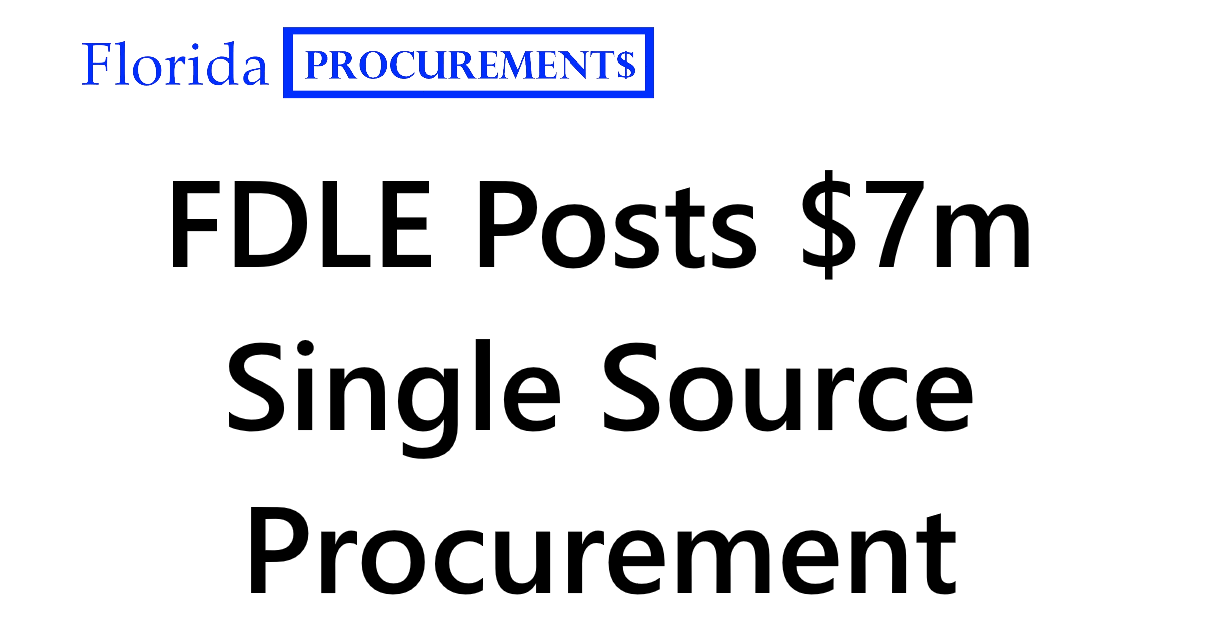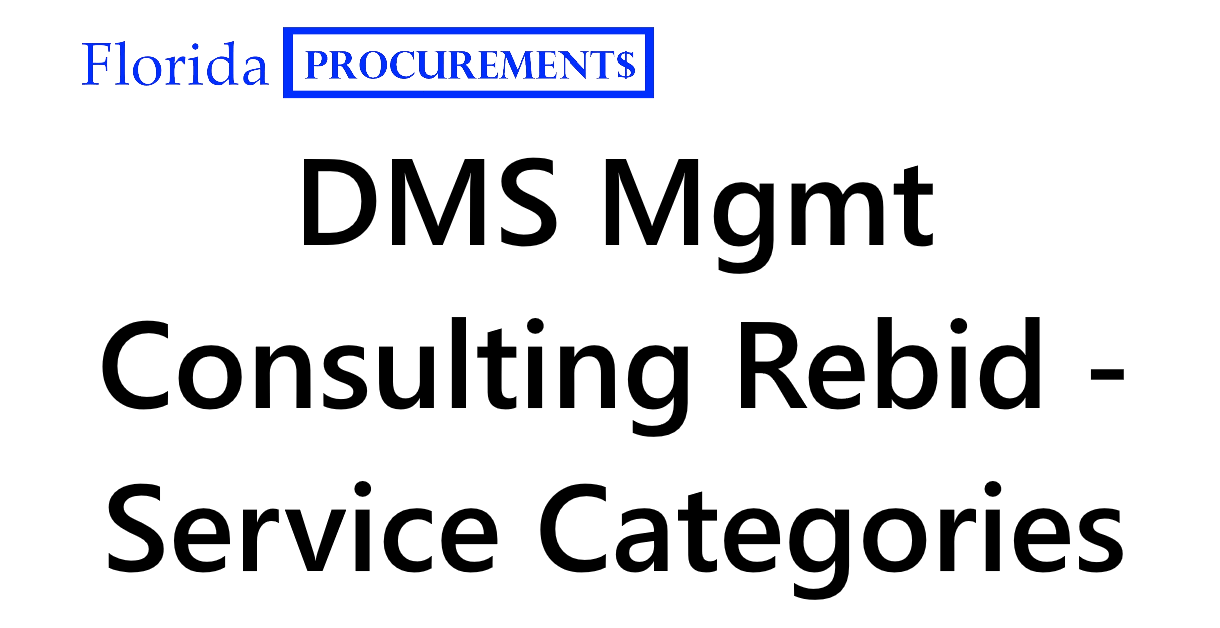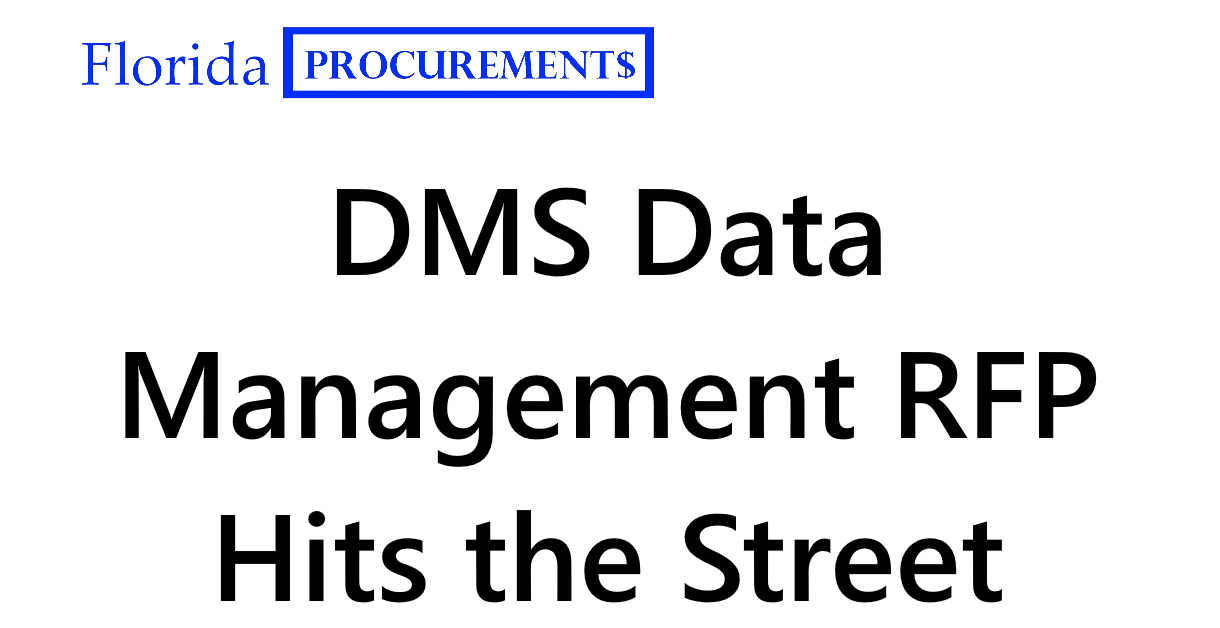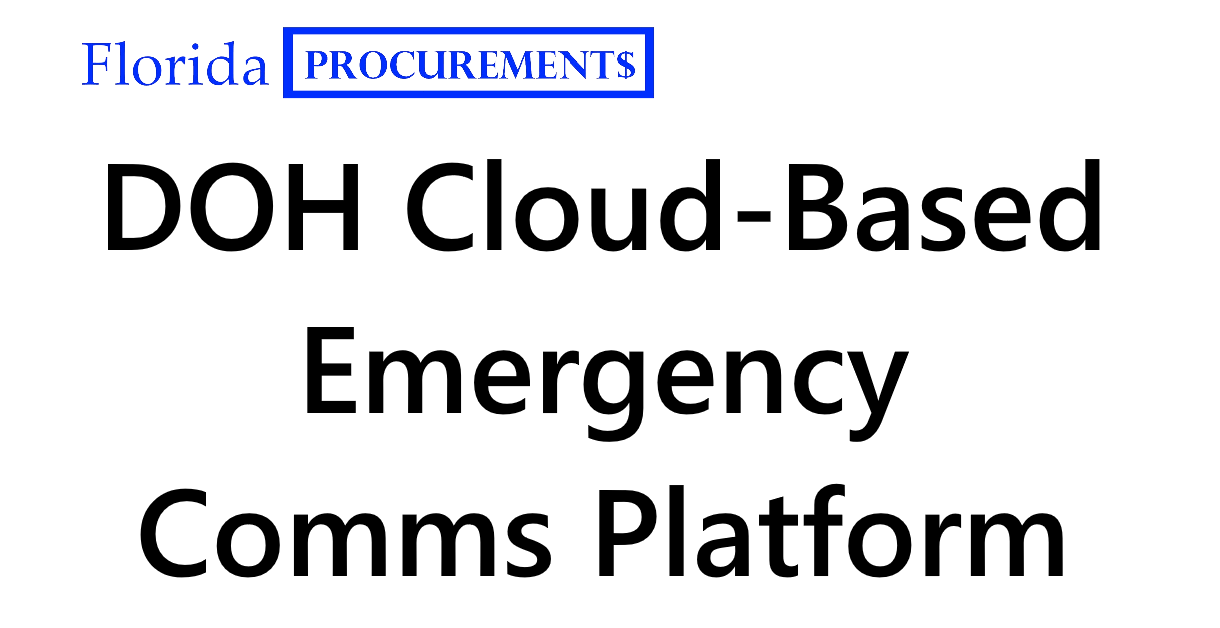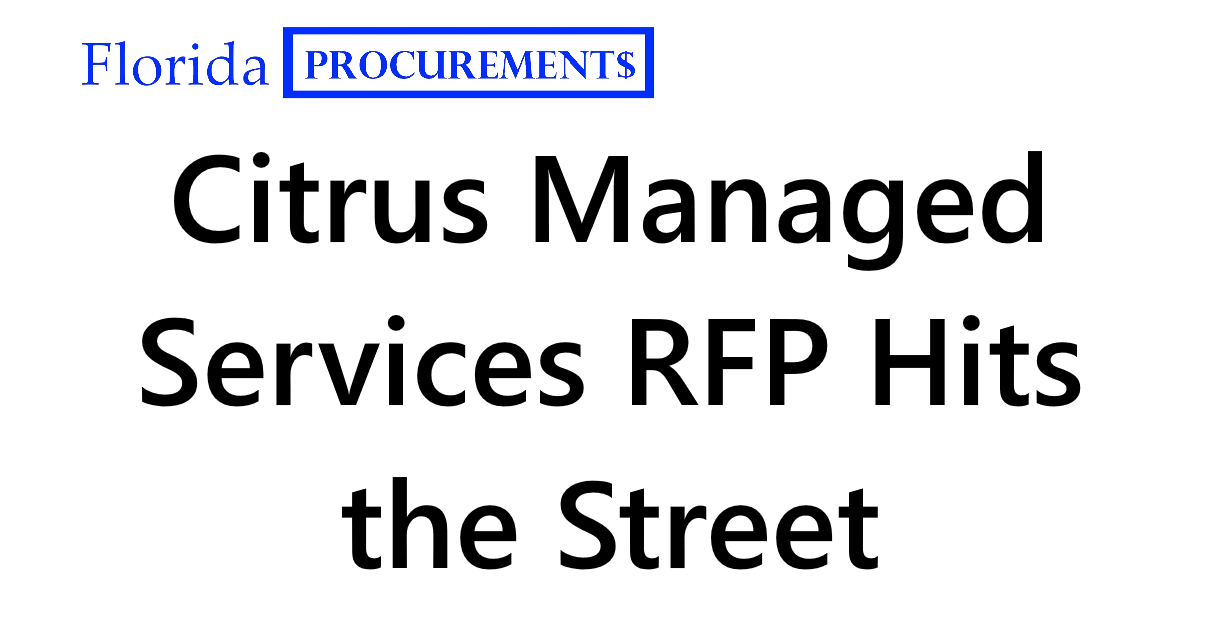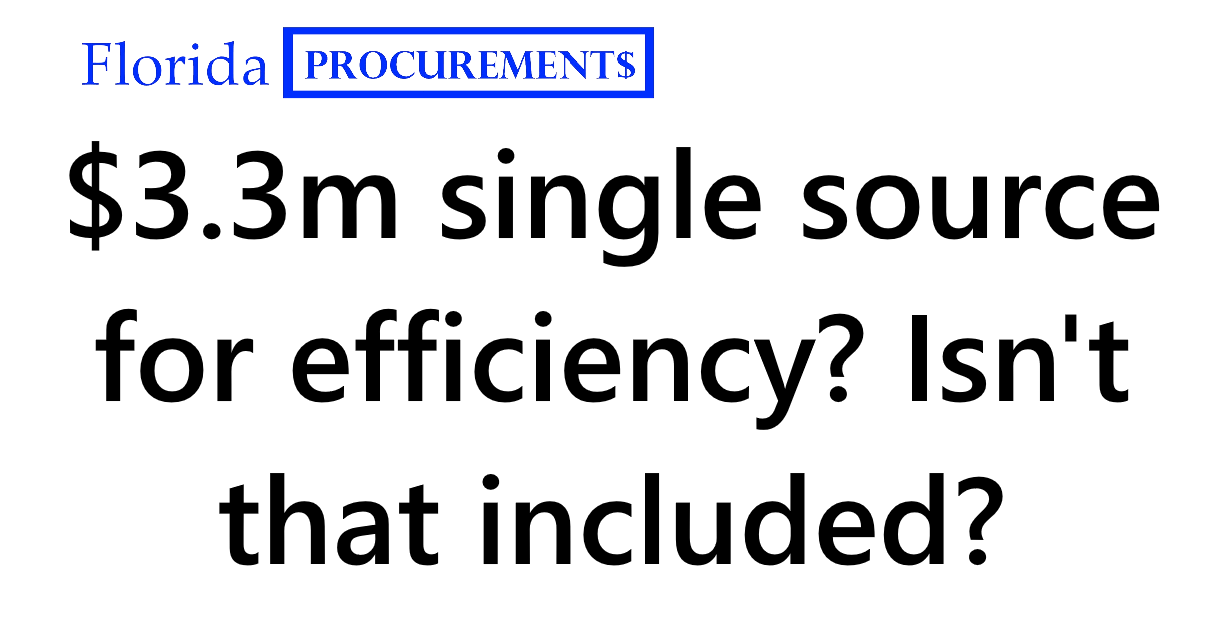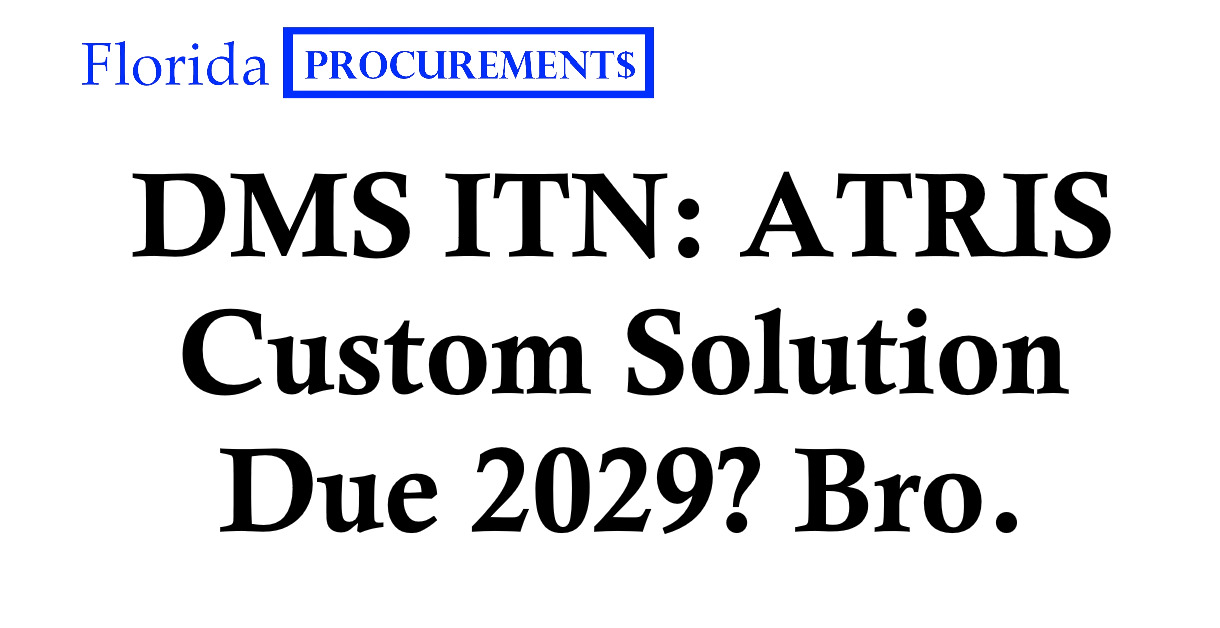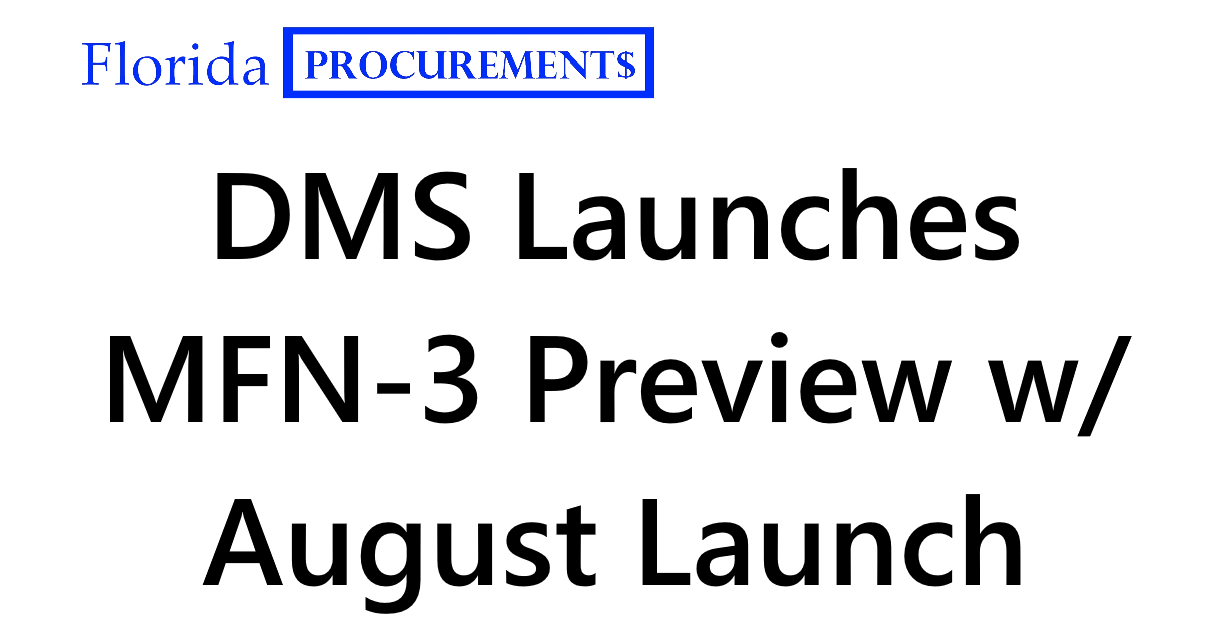
- June 10, 2025
- Sean Gellis
- 0
Welcome to FloridaProcurements.com (FlaProc), your authoritative resource for navigating Florida’s government contracting landscape, with particular focus on transportation and technology opportunities. FlaProc provides free, expert guidance to help companies identify and secure state contracting opportunities throughout Florida.
This resource is maintained by Attorney Sean Gellis of Gellis Law, PLLC, one of less than 75 attorneys Board Certified in State and Federal Government and Administrative Practice by The Florida Bar. Mr. Gellis brings unique insight to government contracting, having served as the Chief of Staff of the Florida Department of Management Services (DMS), General Counsel of the Florida Department of Transportation (FDOT), and Deputy General Counsel of the Florida Office of Insurance Regulation – positions that provided direct oversight of technology initiatives and issues of statewide importance. His record in bid protest litigation reflects the sophisticated advocacy and strategic thinking he brings to government contracting matters, particularly in complex transportation and technology procurements. Sean also leads Procurement Insider, a confidential subscription service that provides technology vendors with strategic intelligence and insider analysis of Florida government opportunities. Learn more about transforming your approach to government contracting at www.gellislaw.com/procurement-insider
Florida’s $420 Million Digital Backbone: DMS Launches MyFloridaNet-3 Procurement
The Florida Department of Management Services has released a PREVIEW of what may be the most significant technology infrastructure procurement in state history: the MyFloridaNet-3 (MFN-3) Core Services contract. With an estimated annual value of $60 million over a 7-year initial term, this ITN No. DMS-24/25-260 represents a potential $420 million investment in Florida’s digital backbone.
For technology companies, this isn’t just another government contract – it’s the foundation of Florida’s entire telecommunications infrastructure for the next decade.
The Scale of Opportunity: A Digital Infrastructure Giant
The numbers alone tell a compelling story. At $60 million annually, MFN-3 dwarfs most state technology contracts. But the true scale becomes apparent when you consider the scope: this contract will provide the telecommunications backbone for all state agencies, plus eligible local governments, school districts, universities, community colleges, and non-profit organizations throughout Florida.
Think about the reach: every state office building, every public school, every state university, every county courthouse that needs high-speed, secure telecommunications will potentially rely on this infrastructure. We’re talking about thousands of connection points across a state with over 22 million residents.
The 7-year initial term, with potential renewals, means the winning vendor could control Florida’s primary telecommunications infrastructure well into the 2030s. For the right company, this contract could provide revenue stability and market position that’s transformative.
Strategic Context: The Evolution from MFN-2
Understanding MFN-3 requires understanding what came before. Since 2016, L3Harris Technologies has operated MFN-2, providing wide area network (WAN), metropolitan area network (MAN), and broadband solutions under stringent Service Level Agreements.
MFN-2 established the foundation with MPLS backbone services, cloud connectivity options, and managed security services. The current system supports Layer-2 and Layer-3 cloud connections, includes Customer Premise Equipment (CPE) options, and provides comprehensive network operations center (NOC) support.
MFN-3 represents the next evolution, promising enhanced security, improved cloud transport services, multimedia integration, and other advanced capabilities. The procurement documents emphasize that MFN-3 services “will exceed the current-state implementation of MFN-2.”
But here’s the strategic reality: L3Harris enters this competition with nearly a decade of institutional knowledge, established relationships, and deep integration with Florida’s current telecommunications infrastructure.
The Incumbent Advantage: A Case Study in Competitive Dynamics
L3Harris faces this procurement from a position of considerable strength. They understand Florida’s current network topology, have relationships with agency IT personnel, and possess detailed knowledge of existing challenges and requirements.
More importantly, they’ve already solved the complex technical and logistical challenges of serving thousands of locations across Florida’s diverse geography – from dense urban areas to remote rural counties. They know which solutions work and which don’t.
This creates what procurement professionals call “incumbent advantage” – the natural benefits that come from being the current provider. But it also creates challenges for innovation and competition that the procurement process must navigate carefully.
Technical Requirements: The Foundation of a Modern Digital State
The MFN-3 Statement of Work reveals the sophisticated technical infrastructure required to serve a modern state government. The core requirements include:
Dedicated Core Services: The procurement mandates that security infrastructure, core infrastructure, internet infrastructure, and several other critical service types must be provided directly by the winning vendor without subcontractors. This requirement ensures direct accountability and control over mission-critical services.
High Availability Standards: Services must meet 99.999% uptime requirements – that’s less than 6 minutes of downtime per year. In telecommunications, this level of reliability requires redundant systems, multiple data paths, and sophisticated monitoring.
MPLS Foundation: The network must provide enterprise-grade Multiprotocol Label Switching (MPLS) capabilities for voice, video, and data traffic. MPLS enables quality of service guarantees essential for real-time applications like video conferencing and VoIP.
Enhanced Security: Given the sensitive nature of government communications, the network must provide advanced security features including secure VPN capabilities and comprehensive threat management.
Cloud Integration: Modern government operations require seamless cloud connectivity. MFN-3 must support both Layer-2 and Layer-3 cloud connections to major providers.
These aren’t just technical specifications – they’re the requirements for operating a digital government that serves 22 million Floridians.
Procurement Process: ITN Strategy and Timeline
DMS has structured this as an Invitation to Negotiate (ITN), Florida’s unique procurement method that emphasizes best value over lowest price. This approach recognizes that for complex technology infrastructure, the cheapest option rarely provides the best long-term value.
Two-Phase Approach: The process divides into evaluation and negotiation phases. During evaluation, technical proposals receive 60% of the scoring weight (3,000 out of 5,000 points) while cost proposals receive 40% (2,000 points). This weighting reflects the critical importance of technical capability for infrastructure services.
Competitive Range: After evaluation, DMS will establish a competitive range of vendors “reasonably susceptible of award” and enter negotiations. This allows for detailed discussions about technical approaches, pricing models, and contract terms.
Extended Timeline: With replies due September 8, 2025, and contract execution anticipated for October 2026, this timeline reflects the complexity of evaluating and negotiating such a significant infrastructure contract.
Best and Final Offers: The negotiation process will likely culminate in Best and Final Offers (BAFOs), allowing vendors to refine their proposals based on the negotiation discussions.
Strategic Implications for Technology Vendors
For companies considering this opportunity, several strategic factors merit careful consideration:
Market Entry Timing: This procurement represents a rare opportunity to compete for Florida’s primary telecommunications infrastructure. Similar opportunities may not arise for another decade.
Investment Requirements: Competing effectively will require significant investment in proposal development, potentially including detailed network design, financial modeling, and extensive technical documentation.
Partnership Strategy: The scale and complexity of MFN-3 may favor vendors with strong subcontractor relationships, particularly for services where subcontracting is permitted.
Long-term Commitment: The 7-year initial term with renewal options means this isn’t just a contract – it’s a long-term partnership with the State of Florida.
Technical Innovation: This procurement provides an opportunity to introduce next-generation telecommunications technologies to government operations.
Competitive Landscape Analysis
While L3Harris holds incumbent advantages, the ITN structure creates opportunities for competitive differentiation:
Innovation Premium: Companies offering truly innovative approaches to network design, security, or service delivery may overcome cost disadvantages through superior technical scoring.
Geographic Expertise: Vendors with deep experience serving Florida’s unique geographic challenges – from hurricane preparedness to serving rural communities – may have competitive advantages.
Cloud Integration: As government operations become increasingly cloud-centric, vendors with superior cloud connectivity solutions may differentiate themselves.
Security Leadership: In an era of increasing cybersecurity threats, vendors offering advanced security capabilities may justify premium pricing.
Total Cost of Ownership: Smart vendors will present comprehensive TCO analyses that account for long-term operational costs, not just initial implementation expenses.
Risk Factors and Mitigation Strategies
This procurement carries significant risks for both vendors and the state:
Transition Risk: Moving from MFN-2 to MFN-3 must occur without disrupting critical government operations. Vendors must demonstrate sophisticated transition planning capabilities.
Performance Risk: The 99.999% uptime requirement means there’s virtually no margin for error. Vendors must prove their ability to meet these stringent performance standards.
Scale Risk: Serving thousands of locations across Florida requires operational capabilities that many vendors simply don’t possess.
Financial Risk: The scale of investment required means this procurement could strain the resources of all but the largest telecommunications providers.
Technology Risk: Committing to 7+ years of technology infrastructure in a rapidly evolving field requires careful planning for future upgrades and capabilities.
Innovation Opportunities Within Infrastructure Constraints
Despite the conservative nature of infrastructure procurement, MFN-3 creates opportunities for meaningful innovation:
Software-Defined Networking: Modern SDN approaches could provide more flexible and efficient network management.
Advanced Analytics: Network monitoring and optimization using AI and machine learning could improve performance and reduce costs.
Cybersecurity Integration: Embedding advanced threat detection and response capabilities directly into the network infrastructure.
Hybrid Cloud Optimization: Developing more sophisticated approaches to managing traffic between on-premises and cloud resources.
Disaster Recovery Enhancement: Given Florida’s exposure to natural disasters, innovative approaches to network resilience could provide significant value.
Financial Modeling and Pricing Strategy
The cost evaluation methodology provides important insights for pricing strategy:
E-Rate Focus: The procurement documents emphasize that “E-Rate Eligible Cost is the most heavily weighted component of the bid evaluation.” This reflects the significant federal funding available for educational and library telecommunications services.
Site Inventory Pricing: Pricing models must account for the diverse mix of connection types and locations across Florida’s government infrastructure.
Scalability Pricing: With thousands of potential connection points, pricing must be structured to accommodate growth and changes in demand.
Long-term Value: Given the 7-year initial term, vendors must balance competitive initial pricing with sustainable long-term economics.
The Vendor Capture Question
This procurement raises interesting questions about the balance between operational stability and competitive innovation. L3Harris’s incumbent position provides them with advantages that may be difficult for competitors to overcome, regardless of the technical merits of alternative approaches.
From a strategic perspective, this creates a classic procurement dilemma: How do you maintain the benefits of proven, stable infrastructure while ensuring competitive pricing and continued innovation?
The ITN process attempts to address this through its emphasis on best value and the negotiation phase, which allows for detailed discussions about technical approaches and long-term value. But the fundamental challenge remains: incumbent vendors often know exactly what it costs to provide current services, while challengers must estimate costs for unfamiliar requirements.
What This Means for Florida’s Digital Future
MFN-3 isn’t just a procurement – it’s a foundation for Florida’s digital government strategy for the next decade. The decisions made in this contract will affect:
Government Efficiency: Modern telecommunications infrastructure enables more efficient government operations, from remote work capabilities to digital service delivery.
Economic Development: High-quality government telecommunications infrastructure supports broader economic development by demonstrating the state’s commitment to digital capabilities.
Educational Opportunities: E-rate eligible services mean this infrastructure will directly support educational institutions across Florida.
Emergency Response: In a state prone to natural disasters, reliable telecommunications infrastructure is essential for emergency coordination and response.
Innovation Adoption: The capabilities built into MFN-3 will influence how quickly Florida government can adopt new technologies and digital services.
Strategic Recommendations for Potential Vendors
Based on my experience overseeing technology procurements from the agency perspective, several recommendations emerge for companies considering this opportunity:
Conduct Thorough Market Research: Understand not just the technical requirements, but the operational realities of serving Florida’s diverse geography and complex organizational structure.
Develop Compelling Differentiation: Given L3Harris’s incumbent advantages, challengers must offer genuinely superior value propositions, whether through innovation, cost savings, or enhanced capabilities.
Plan for Long-term Partnership: This isn’t a transactional procurement. DMS is seeking a strategic partner for telecommunications infrastructure. Proposals should reflect this partnership orientation.
Invest in Proposal Quality: The scale of this opportunity justifies significant investment in proposal development, including bringing in specialized expertise and conducting detailed technical planning.
Consider Consortium Approaches: The scale and complexity of MFN-3 may favor teams that combine complementary capabilities from multiple companies.
Prepare for Intense Negotiations: The ITN process emphasizes negotiations. Companies should prepare their most experienced negotiators and technical experts for what will likely be complex discussions.
The Broader Procurement Lesson
MFN-3 illustrates several important principles about major government technology procurements:
Scale Matters: Contracts of this magnitude operate by different rules than smaller procurements. The investment required to compete effectively limits the field to well-capitalized vendors.
Technical Complexity Favors Experience: While innovation is valuable, complex infrastructure projects reward vendors with proven track records in similar environments.
Relationships Are Important: Long-term infrastructure contracts require trust and collaboration between vendors and agencies. Technical capability alone is rarely sufficient.
Timing Is Critical: Major infrastructure procurements occur infrequently. Missing this opportunity likely means waiting another decade for a similar chance.
Looking Ahead: Timeline and Next Steps
With replies due September 8, 2025, companies have approximately three months to develop comprehensive proposals. This timeline is aggressive for a procurement of this complexity, suggesting that serious competitors should already be conducting market research and assembling proposal teams.
The evaluation phase (September 22 – November 21, 2025) followed by negotiations (December 5, 2025 – February 9, 2026) indicates DMS’s commitment to thorough evaluation and meaningful negotiations.
Contract execution is anticipated for October 2026, meaning the new MFN-3 services would likely launch in late 2026 or early 2027.
The Bottom Line
MFN-3 represents one of the most significant technology infrastructure opportunities in Florida government history. For the winning vendor, it offers the chance to provide the telecommunications foundation for an entire state government, with revenue potential exceeding $400 million over the initial contract term.
But this opportunity comes with commensurate challenges: intense competition, complex technical requirements, stringent performance standards, and the operational reality of serving thousands of locations across a geographically diverse state.
For L3Harris, this procurement represents both an opportunity to continue their Florida telecommunications partnership and the risk of losing a major revenue source to competitors.
For challenger companies, MFN-3 offers a rare chance to compete for transformative infrastructure business, but requires careful assessment of technical capabilities, financial resources, and strategic commitment.
For Florida government and citizens, this procurement will determine the quality, capability, and cost of critical telecommunications infrastructure for the next decade.
The stakes couldn’t be higher. In an increasingly digital world, telecommunications infrastructure isn’t just a government service – it’s the foundation for economic development, educational opportunity, emergency response, and citizen engagement.
MFN-3 will help determine whether Florida remains at the forefront of digital government services or falls behind states with more advanced telecommunications infrastructure. The companies competing for this contract aren’t just seeking revenue – they’re competing to build the digital foundation of Florida’s future.
Sean Gellis maintains FloridaProcurements.com and leads Gellis Law, PLLC, providing expert insight into Florida government contracting with particular focus on transportation and technology opportunities. As former Chief of Staff of the Florida Department of Management Services (DMS), General Counsel of the Florida Department of Transportation (FDOT), and Deputy General Counsel of the Florida Office of Insurance Regulation (OIR), he brings unparalleled insider perspective to government procurement matters. Board Certified in State and Federal Government and Administrative Practice by The Florida Bar—a distinction held by fewer than 75 Florida attorneys—he combines sophisticated legal experience with practical agency knowledge. Through FloridaProcurements.com, he regularly analyzes procurement trends and strategic opportunities in Florida’s government marketplace.
His Procurement Insider subscription service offers companies confidential intelligence and strategic guidance on Florida technology procurements, transforming how innovative providers compete for government business. Sean’s unique background enables him to bridge the gap between government processes and private sector innovation, helping clients navigate procurement challenges and capitalize on opportunities that others miss.
Questions about this analysis or need strategic guidance on MFN-3 or other Florida procurement opportunities? Contact Gellis Law, PLLC at www.gellislaw.com


